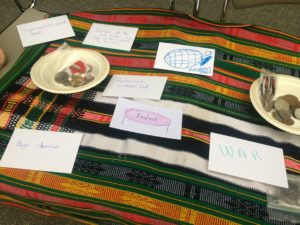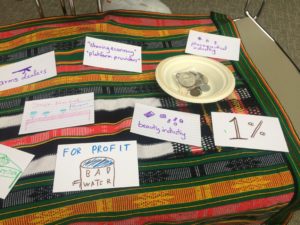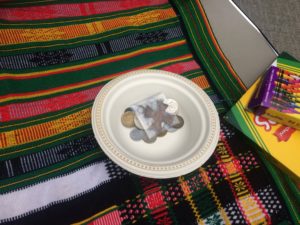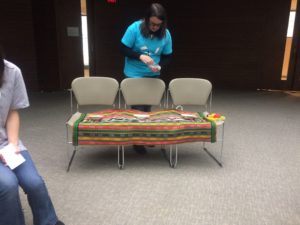2017 10 30 – The Cleansing of the Temple
Prepared by members of Student Christian Movement at York University
Download this, and other resources, from our Resource Page
John 2: 13-17 (New International Version)
13 When it was almost time for the Jewish Passover, Jesus went up to Jerusalem. 14 In the temple courts he found people selling cattle, sheep and doves, and others sitting at tables exchanging money. 15 So he made a whip out of cords, and drove all from the temple courts, both sheep and cattle; he scattered the coins of the money changers and overturned their tables. 16 To those who sold doves he said, “Get these out of here! Stop turning my Father’s house into a market!” 17 His disciples remembered that it is written: “Zeal for your house will consume me.” (Psalms 69:6)
Some Context
The Temple and Passover
The Temple during Herod’s time was divided into four different sections: The outer/gentile court, the inner/Israel Court, the Priest Court, and the Holy of Holies. Only in the outer courts were merchants and moneychangers allowed. During the Passover, all men over the age of 12 had to attend the festival. To do so, they would need to pay a small amount of tax to the temple as well as provide a sacrifice.
Money Changers and Merchants
Since many people were from out of town, they did not have the Jewish temple currency. Instead, they would need to have their currency exchanged. The moneychangers did this work, in which they received a profit. Additionally, travellers usually also needed to buy an animal at the temple, usually a dove or a goat, which was sold for exorbitant prices.
Common Interpretations

Some common interpretations of the Jesus table flipping event are as follows:
- Jesus saw trade in the Temple as a desecration of its true purpose so, maybe with the help of others, he tried to shut down the trade in sacrificial animals and the money-changing that was going on
- He saw the Court of the Gentiles as a sacred place, part of God’s Temple. The general hullabaloo of the area made this impossible, and it angered him
- He made an assessment that the trade and money changing exploited people, especially the poor, by making excessive charges, so he intervened
- Jesus thought the priests and Temple personnel were abusing their sacred roles by being involved in business in a sacred area
- There was already a conflict going on between the Sanhedrin and the High Priest Caiaphas in AD30, when Caiaphas allowed traders to set up markets in the Court of the Gentiles as punitive competition against markets controlled by the Sanhedrin.
(Fletcher, E. (2012). Jesus attacks the moneychangers. http://www.jesus-story.net/cleansing.htm#say)
Questions
- Why did Jesus flip the tables?
- If you were around when Jesus flipped the tables, how would you have reacted? Would you be the kind of person to join in, or stay back? How do you think a poor person would have reacted to seeing this event? What about a merchant? Or a Roman soldier? Or a Rabbi?
- If Jesus lived (physically on earth) today, and He were to replicate this same event, whose tables would He overturn?

The participants write cards, draw pictures, and offer symbols of oppressive powers that we are called upon to resist today, and place them onto a prepared table.
A Prayer
Gracious Lord, who calls us to do what is just and right, working to free the robbed, support migrants, the orphaned, and the widowed. Thank you for this opportunity to think about your work and for the friends we have here today. We pray for continual guidance to feed the hungry, clothe the naked, house the homeless, care for the sick, visit the imprisoned, and support and love our neighbours. Please provide us strength to enact your kingdom here, resisting unjust and oppressive conditions like Jesus did on his earthly ministry. We lovingly call you to witness our symbolic commitment to resisting evil, as we flip this table [flip table]. We love you Lord, Amen.


